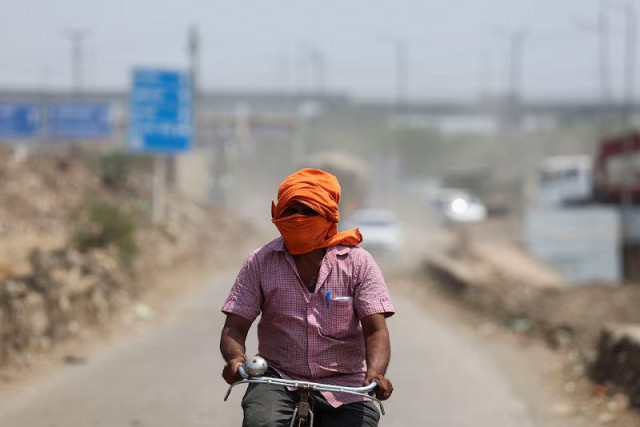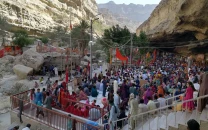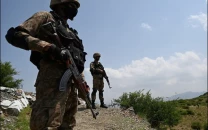Heatwave paralyses life in Peshawar
Prolonged blackouts exacerbate people’s misery

An intense heatwave has gripped the Peshawar valley, paralleling the scorching conditions prevailing across the country, effectively paralyzing day-to-day life.
City roads wear a deserted look for most of the day, with hustle and bustle only witnessed after sunset. The suffering of local residents has been exacerbated by unscheduled load shedding, leaving some villages on the city’s outskirts without electricity for months due to alleged line losses and non-payment of bills.
Even within the walled city and its suburbs, enduring eight to ten hours of load shedding has become a common occurrence, exacerbating the misery faced in the extreme heat.
“The worst load shedding and increase in electricity prices have made life difficult for people,” a local resident remarked.
“You can’t go out in this heat, and it’s impossible to get a good night’s sleep at home due to the load shedding. We’re caught between two evils, said local resident Shafiqur Rehman.
“Solar panels are also expensive and not affordable for the poor segments of society,” he said, adding that the prices of batteries and investors are also still high.
The series of protests against load shedding has gained momentum in recent days, with locals taking to the streets to voice their discontent.
On Sunday, temperatures soared to 41 degrees Celsius in the provincial metropolis, leaving residents grappling with oppressive heat and power shortages. The recent increase in electricity prices by the federal government has only added to their woes.
“Solar panels are also expensive and not affordable for the poor segments of society,” lamented another local resident, highlighting the financial barriers to adopting alternative energy solutions. Even generators, once a reliable option, have become less feasible due to soaring fuel prices and gas shortages.
Meanwhile, the Khyber-Pakhtunkhwa (K-P) Provincial Disaster Management Authority (PDMA) has issued alerts about an impending heatwave and potential flash floods in vulnerable areas.
The met office forecast warns of considerable temperature increases, which could trigger flash floods in Upper and Lower Chitral, Kohistan, Upper and Lower Dir, and Swat due to snow and glacier melting.
In response, the PDMA has directed district administrations to inform local communities living near glaciers about the situation and take precautionary measures. Emergency rescue services and essential equipment are on red alert, with authorities ensuring road maintenance and emergency response readiness.
With monsoon-related disasters looming, the PDMA has initiated a comprehensive contingency plan for 2024. This plan aims to engage stakeholders in identifying potential hazards, vulnerabilities, and risks associated with the monsoon season. By mapping available resources, the authorities seek to minimize disaster risks and ensure a well-coordinated response to emergencies.
“All the stakeholders including the district administrations have been ordered that they should put emergency rescue services and other officials on red alert and all the equipment needed for emergency response should be also kept ready,” said an official of the PDMA while talking to The Express Tribune.
Deputy Commissioners have been asked to inform the tourists in these districts about the potential dangers so that they could avoid traveling to sensitive areas.
Published in The Express Tribune, June 3rd, 2024.



















COMMENTS
Comments are moderated and generally will be posted if they are on-topic and not abusive.
For more information, please see our Comments FAQ